In December 1950, President Truman established our country's first nuclear test site on the continent—at the Nevada Proving Ground (a.k.a. Nevada Test Site), formerly part of the Las Vegas Bombing and Gunnery Range.
The Atomic Energy Commission's first test occurred the following month, January 1951. And with it came a building boom in Vegas—not just hotels and casinos, but also single-family residences.
In fact, the population of Las Vegas doubled between 1950 and 1960.
The year 1951 also marks when the Beverly Green residential tract was established—though most of the houses were built primarily between 1952 and 1963.
It was added to the National Register of Historic Places in 2016, making it only the second historic district in Las Vegas (the first being John S. Park Neighborhood, designated in 2003).
But it might never have been built at all without the selection of an atomic bomb testing site located just 65 miles north.
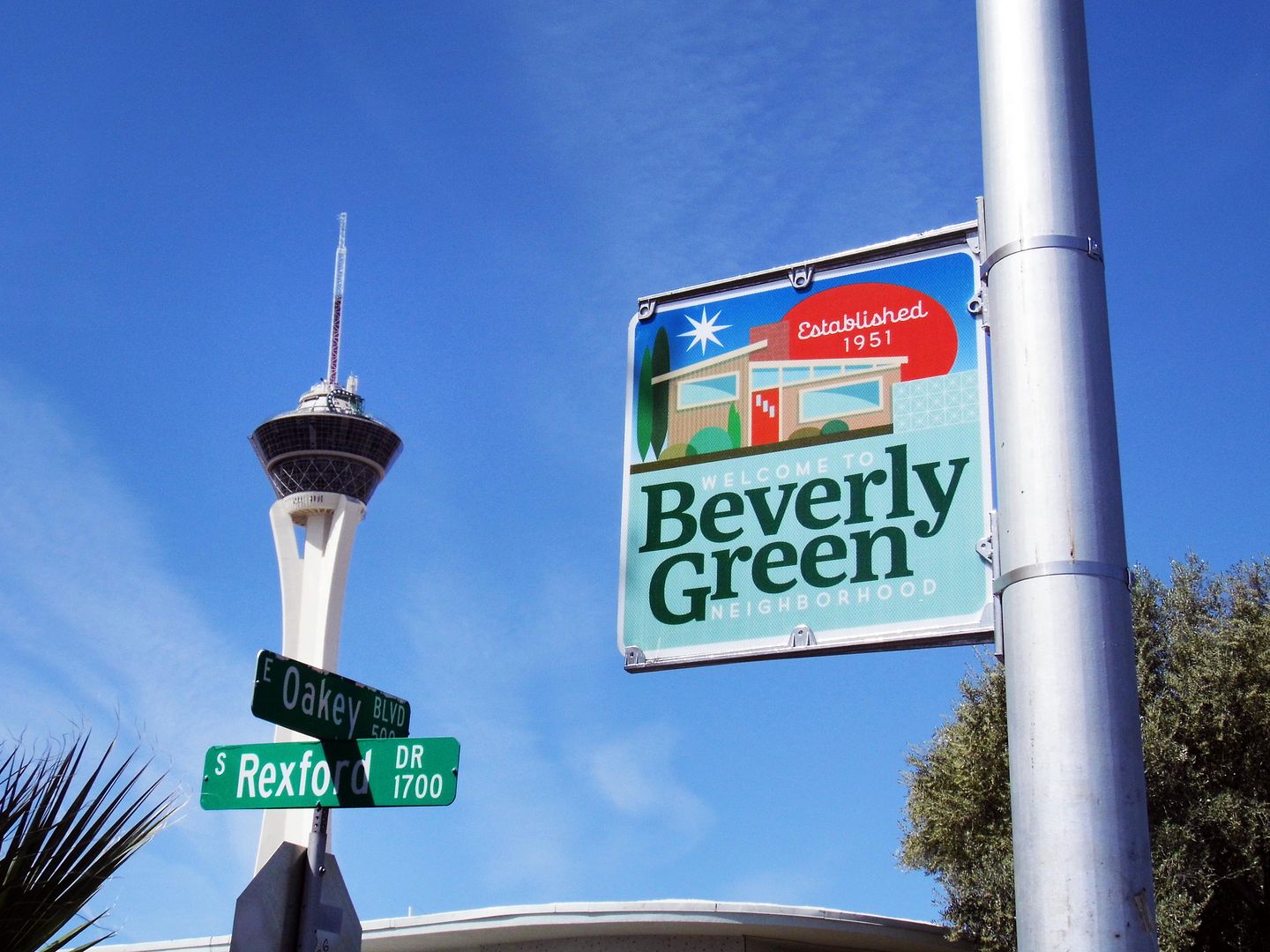
Apparently, nobody knows why it's called Beverly Green—though you can imagine the name emerging out of a certain post-World War II idealism and Cold War escapism.
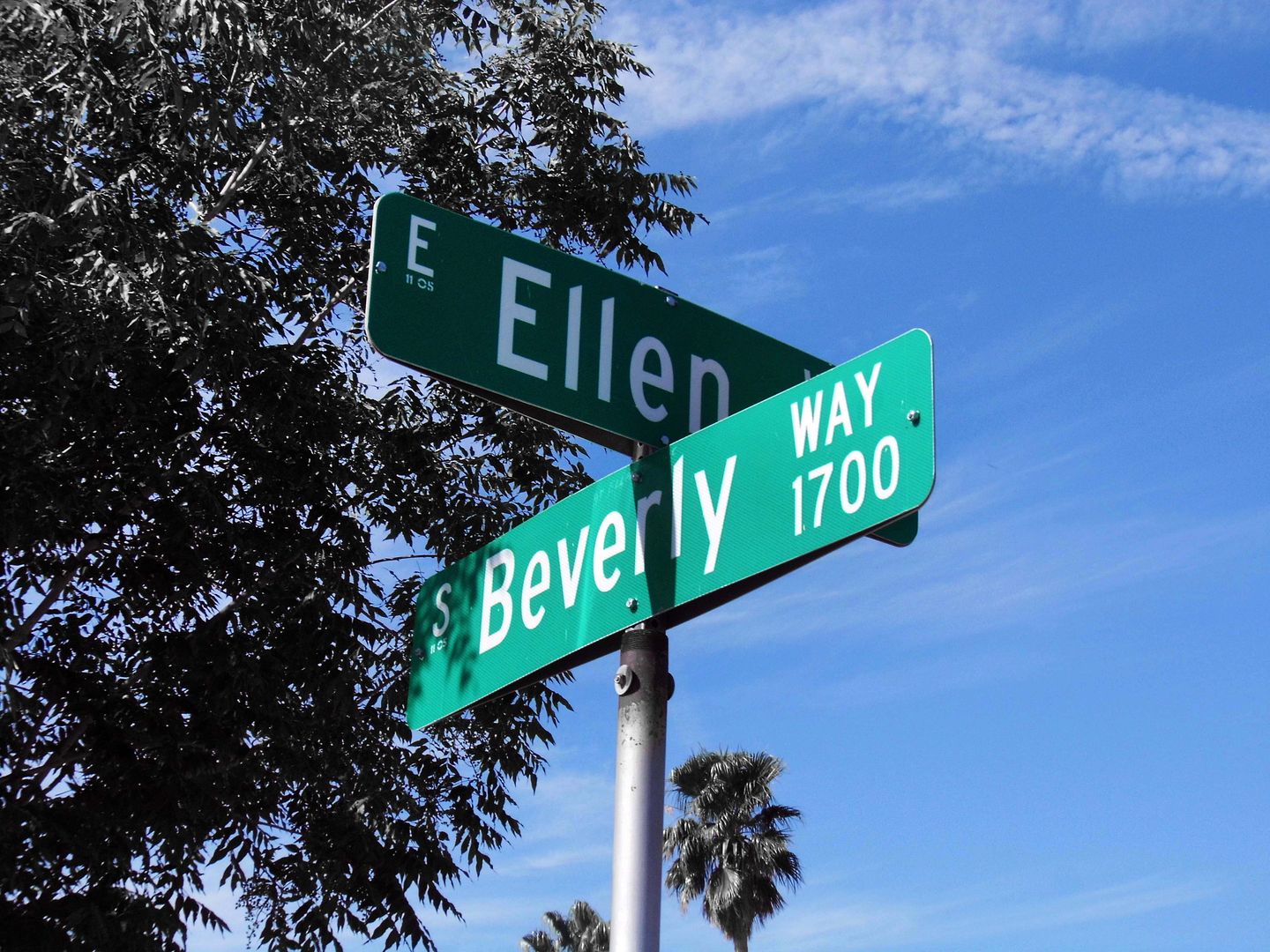
Maybe somebody had a mother or a wife named Beverly, or Ellen, or Barbara—all women's names given to streets within the tract.
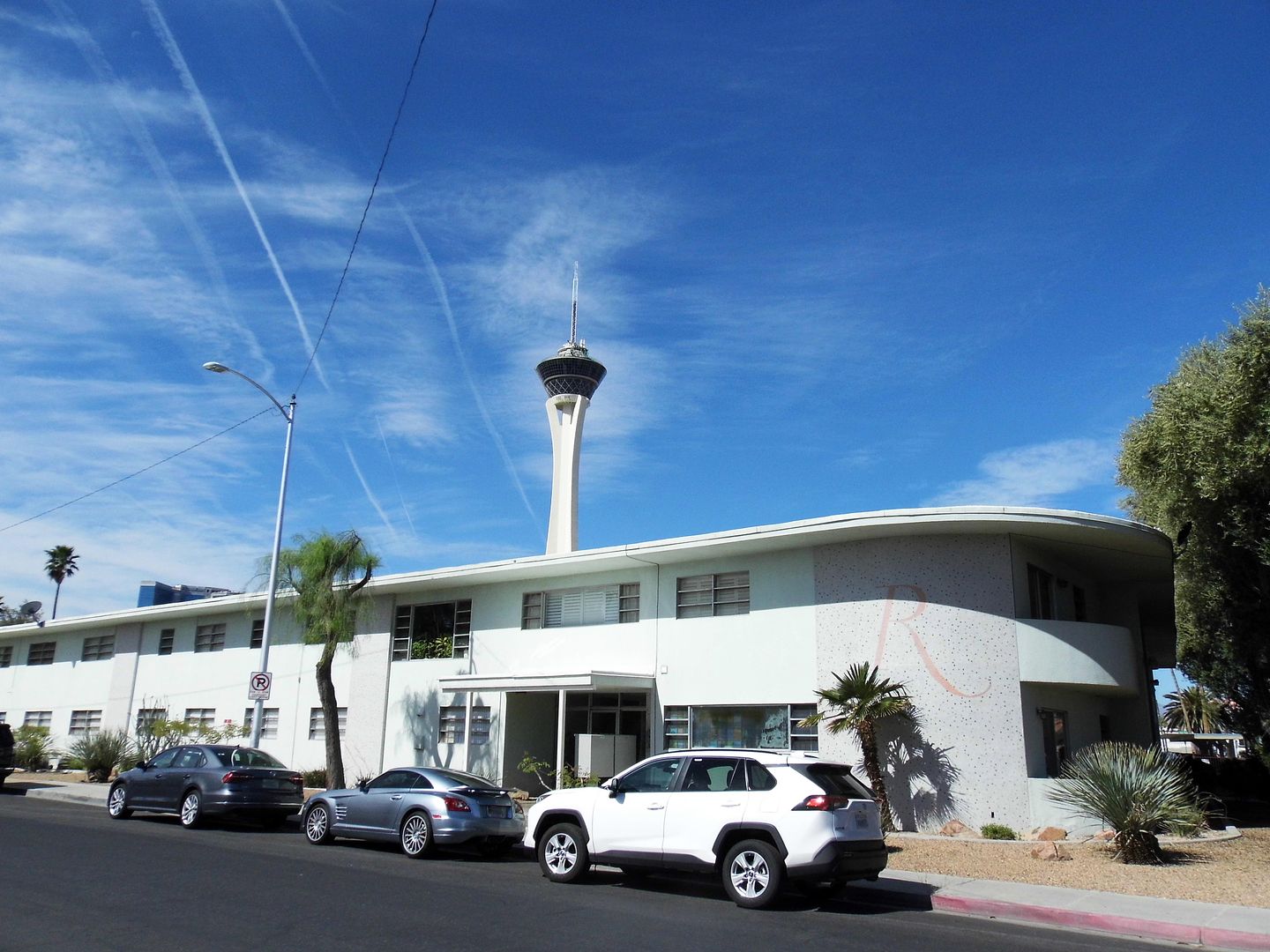
The Beverly Green community was planned long before the Las Vegas Strip crept so far north. It now stands in the shadow of the northernmost hotel/casino on the Strip, the Stratosphere [Ed: rebranded "The STRAT" later in 2019].
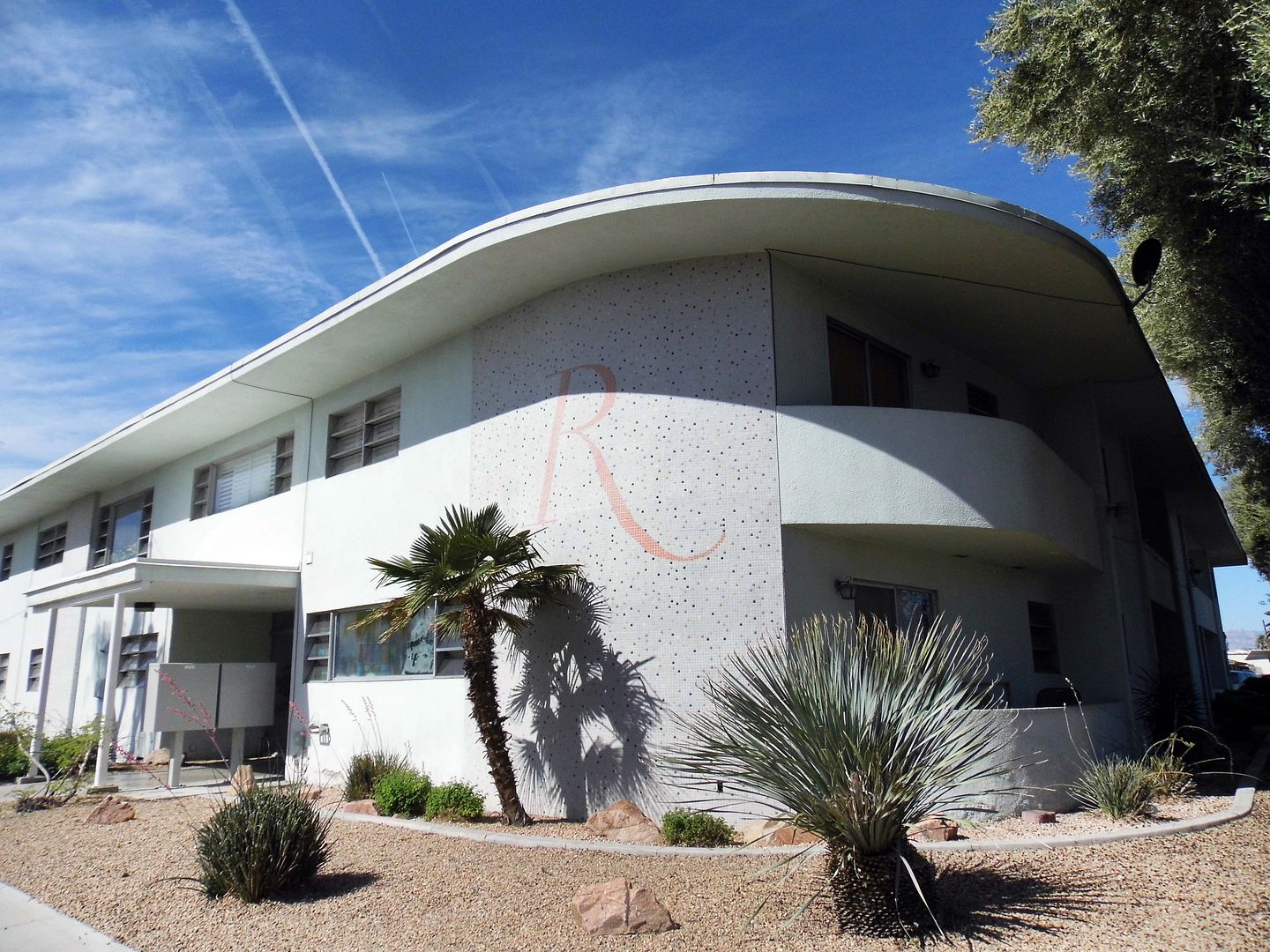
This used to be where celebrities and other people of prominence could get away from the Strip. Liberace owned several co-ops on Rexford and would often visit his mother in the International-style condo complex (circa 1957) on the corner of Rexford and Oakey.

Other famous neighbors at one point or another included Louis Prima, who performed a nightly late night lounge act with his wife Keely Smith at the Sahara, starting in 1954.
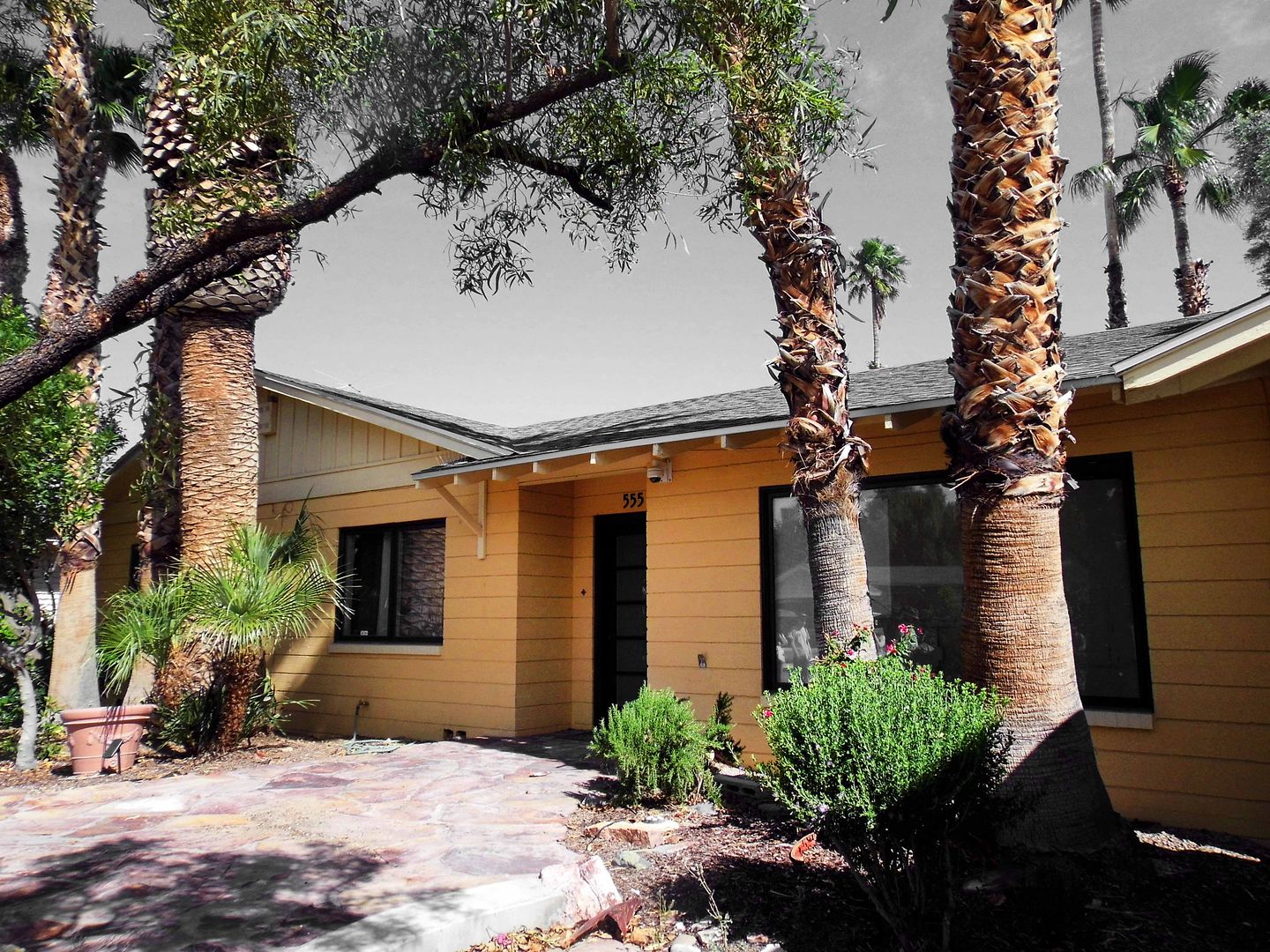
Reportedly, the Rat Pack used to party at the 1955 midcentury ranch home of Hank Henry, a burlesque comedian who'd become good friends with Frank Sinatra.
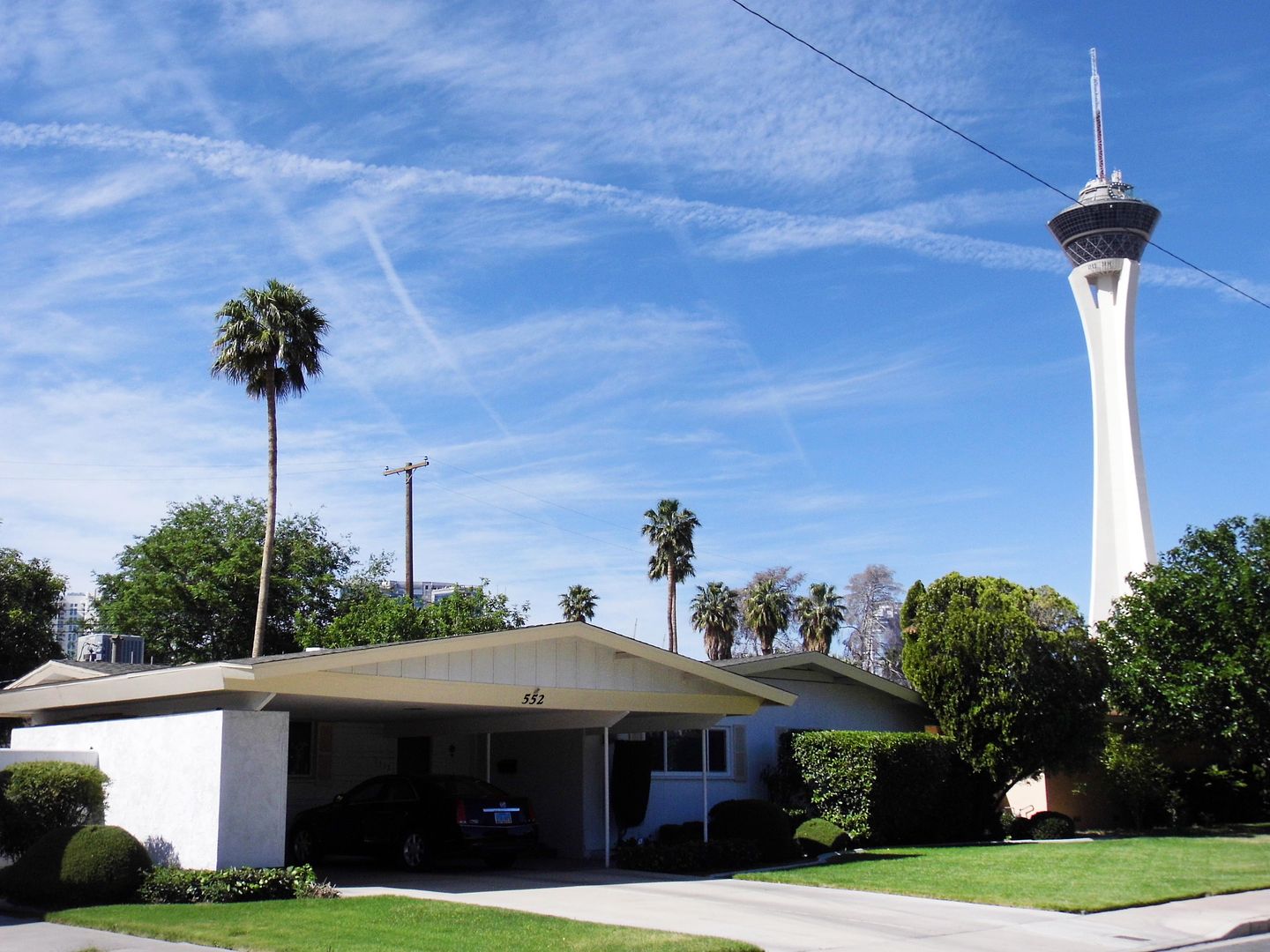
As many of the houses show few alterations over time, you can see how even the wealthiest of Las Vegans—like E. Parry Thomas, Bank of Las Vegas President—lived simply and horizontally, just like regular people, in ranch homes with carports and gabled roofs and green lawns.

Some got fancy with ornamental breeze blocks, like at the 1956 ranch-style home of Dean Shendel—a one-time owner of Caesar's Palace—and his wife, showgirl Elaine Dunn.
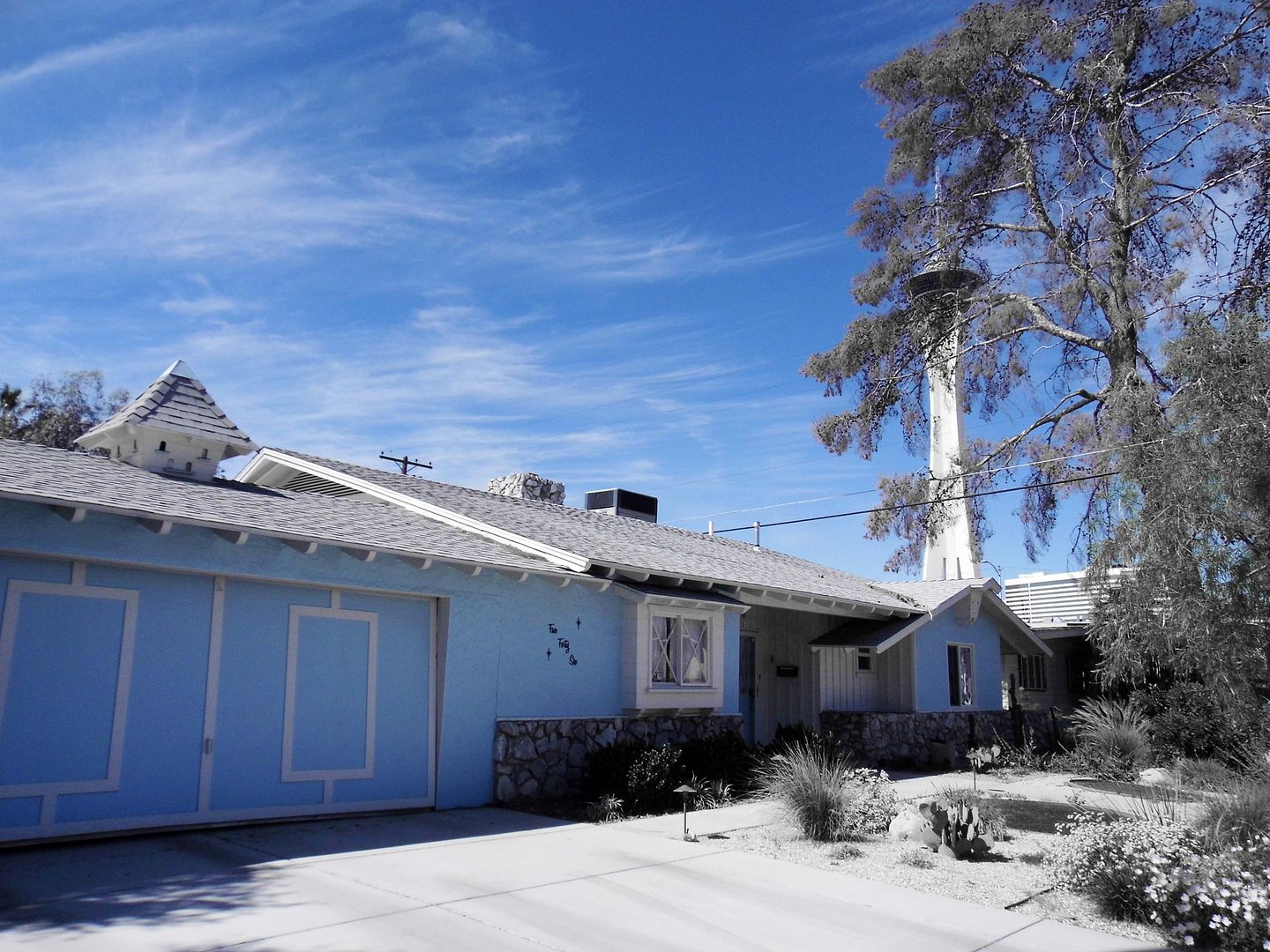
Even though this was a housing tract, the houses in it were anything but cookie-cutter. Many of them were custom-built by local architects like Hugh E. Taylor and Zick and Sharp. Where else could you plop a baby blue Cinderella Ranch-style home with spelled-out house numbers (in script!) and not one but two rooftop dovecotes (a.k.a. architectural birdhouses) in 1956?
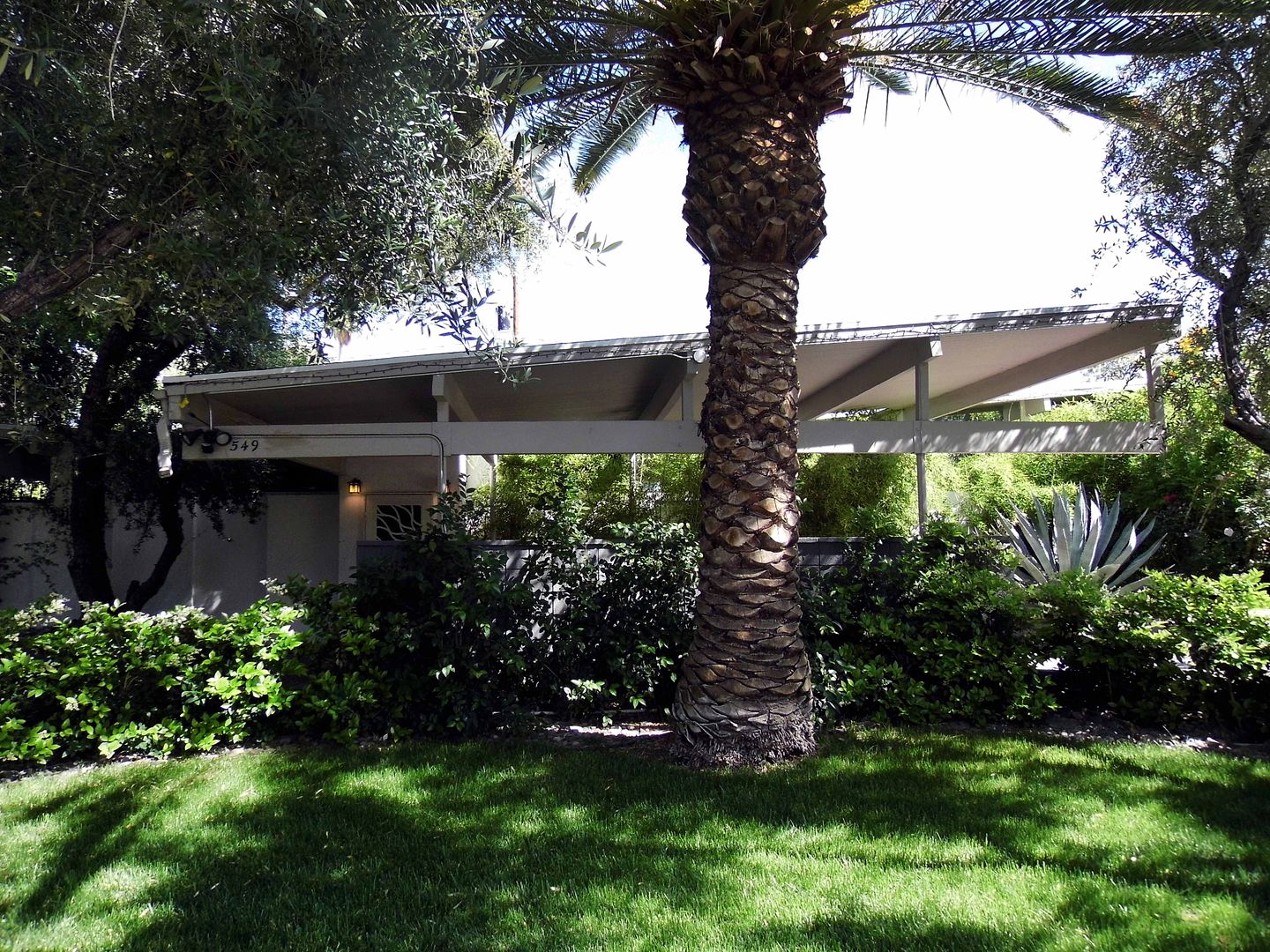
Palm Springs gets all the attention when it comes to Modernism—but Beverly Green has an outstanding example of Desert Modern architecture from 1958, right on East Canosa Avenue.
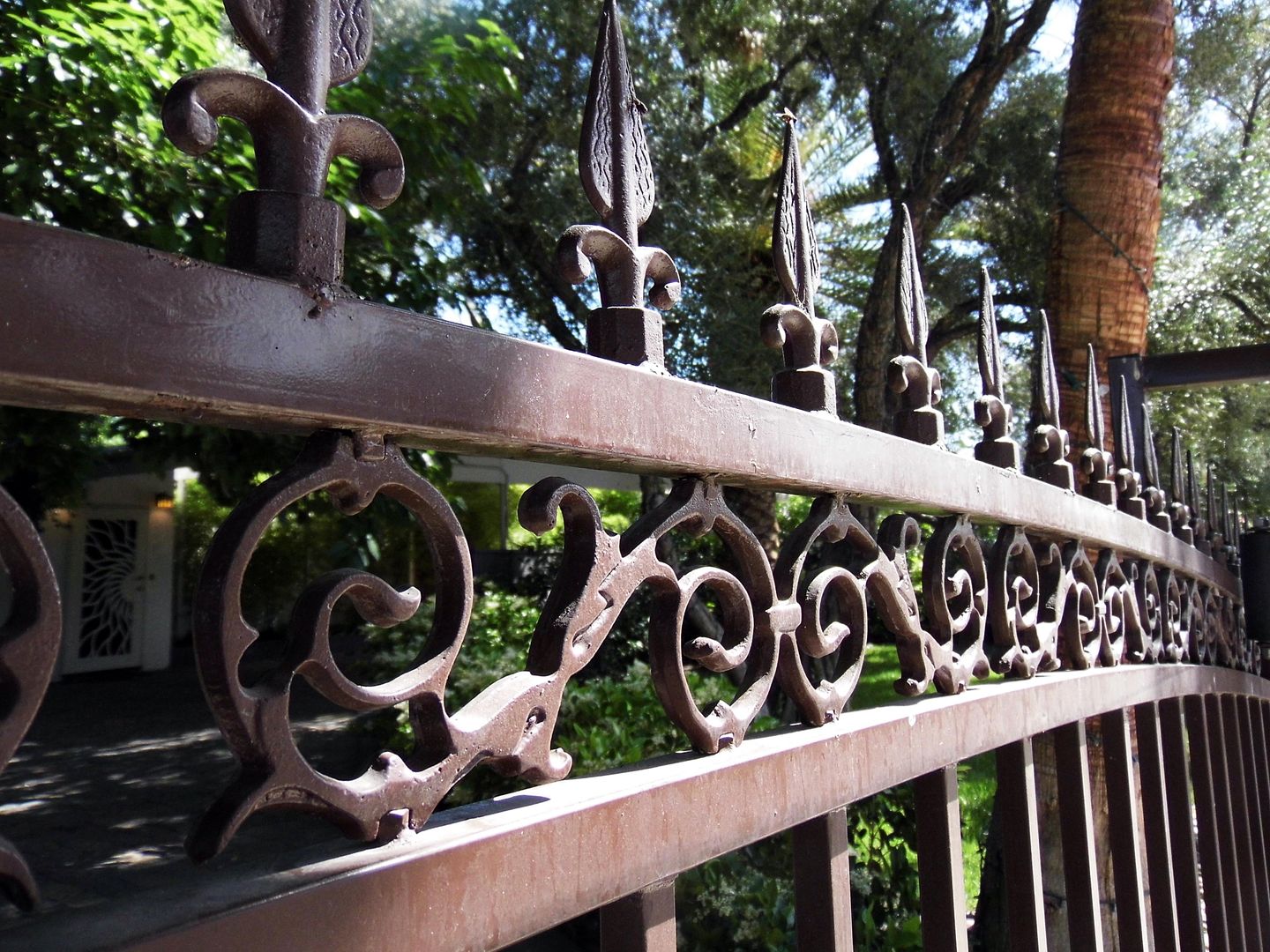
It's one of the properties where you'll find an example of the intricate metal fences that characterize the historic district.
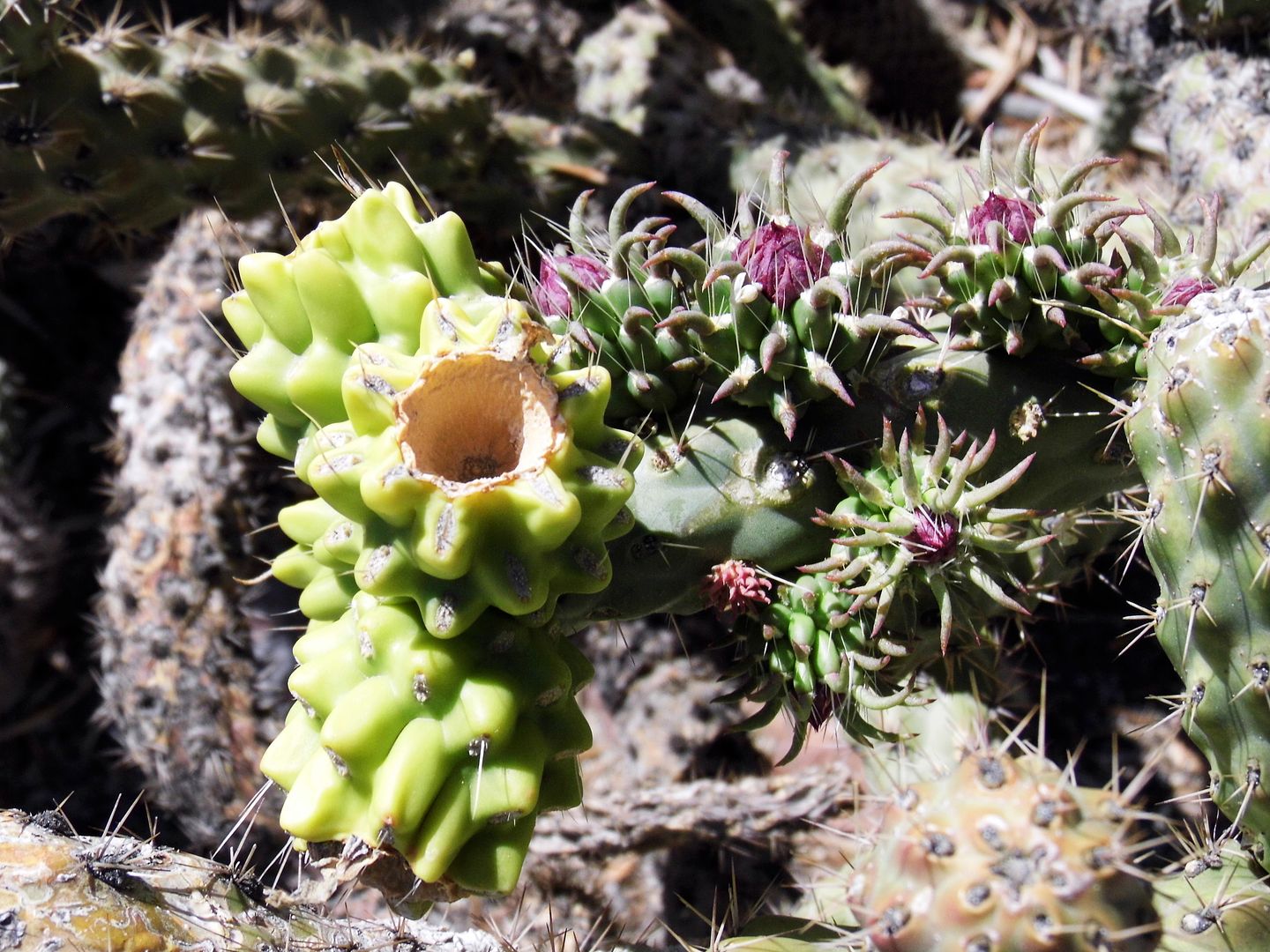
Good landscaping can be found throughout as well.

And it wouldn't be Vegas without a little tiki thrown in—like the black and red Polynesian Ranch-style former home of gaming exec Frank Schivo, once a co-owner of the Sahara. The slanted roof makes the exotic home look like a boat.
So what does any of this have to do with the Nevada Test Site and the atomic detonations that occurred there from 1951 to 1992?
It was in 1952 that the Las Vegas valley was designated a “critical defense area” by President Harry S. Truman—thereby making it eligible for federal housing benefits, including Federal Housing Administration loans.
The nearby booms were a boon to Las Vegas development—not only residential, as funding also came in from the U.S. government for public works improvements (utilities, roads, sewer lines, water pipelines, etc.)
Of course, that only put even more people in the path of drifting fallout and explosion-induced seismic activity—both of which the government assured Nevadans were perfectly safe and within legal limits.
Uh huh.
Photo Essay: Weapons Testing In the Atomic Age
Nevada Test Site: A Matter of National Security
Photo Essay: The (Temporary) View from Above Vegas
Photo Essay: A Frank Sinatra Home, Upon the Demolition of Another

No comments:
Post a Comment